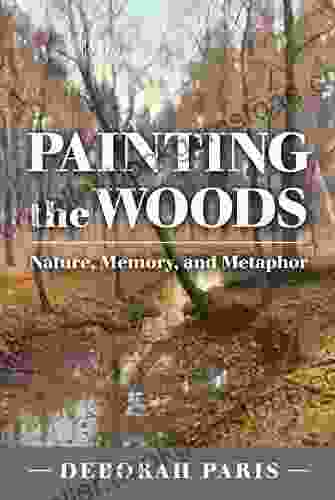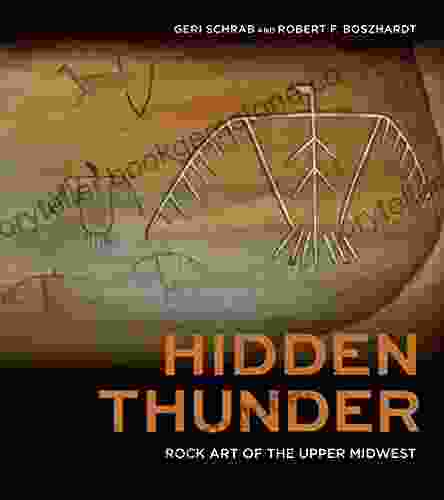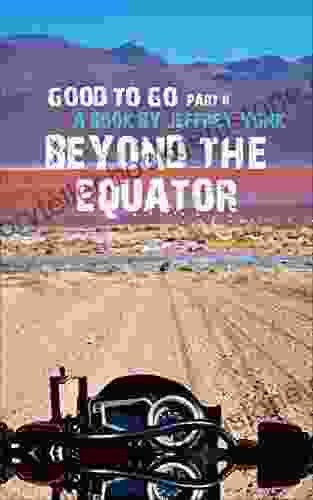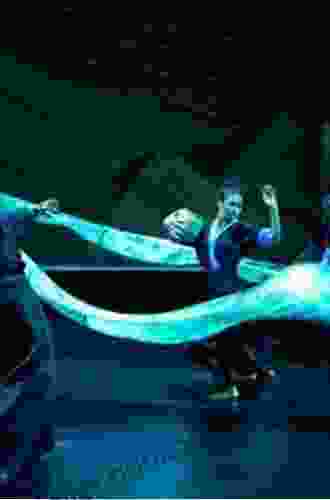Painting the Woods: Nature, Memory, and Metaphor

The forest has long been a source of inspiration for artists, from the earliest cave paintings to the latest contemporary works. In their paintings, artists have sought to capture the beauty and complexity of the natural world, as well as to explore the ways in which our memories and experiences of nature shape our understanding of ourselves and our place in the world.
4.3 out of 5
| Language | : | English |
| File size | : | 3140 KB |
| Text-to-Speech | : | Enabled |
| Screen Reader | : | Supported |
| Enhanced typesetting | : | Enabled |
| Print length | : | 134 pages |
The Renaissance was a time of great interest in the natural world, and artists began to paint landscapes with a new level of realism and detail. One of the most famous examples of this is Leonardo da Vinci's "Mona Lisa," which features a lush, verdant landscape in the background. Other artists, such as Albrecht Dürer and Jan van Eyck, also painted detailed and realistic landscapes that captured the beauty of the natural world.
In the 19th century, Romanticism emerged as a new artistic movement that emphasized the importance of emotion and imagination. Romantic painters often depicted the forest as a place of mystery and wonder, and they used their paintings to explore the ways in which nature could inspire and uplift the human spirit. One of the most famous examples of this is Caspar David Friedrich's "The Wanderer Above the Sea of Fog," which shows a lone figure standing on a mountaintop, looking out over a vast and misty forest.
In the 20th century, modernism and abstract expressionism emerged as new artistic movements that challenged traditional ways of representing the natural world. Modernist painters often simplified their forms and used bold colors to create a more expressive and emotional response to nature. Abstract expressionists, on the other hand, used their paintings to explore the subconscious mind and to create a more personal and introspective response to nature.
Today, artists continue to paint the forest in a variety of styles and ways. Some artists, such as Andrew Wyeth and Edward Hopper, continue to paint realistic landscapes that capture the beauty of the natural world. Others, such as Ansel Adams and Georgia O'Keeffe, use their paintings to explore the more abstract and symbolic qualities of nature. And still others, such as Mark Rothko and Jackson Pollock, use their paintings to create a more emotional and expressive response to nature.
The forest has always been a place of mystery and wonder, and it continues to inspire artists to create beautiful and meaningful works of art. Whether they are capturing the beauty of the natural world, exploring the ways in which nature can inspire and uplift the human spirit, or using their paintings to create a more personal and introspective response to nature, artists have always found the forest to be a rich and rewarding source of inspiration.
The Forest as a Symbol of Memory
The forest has often been used as a symbol of memory, both in literature and in art. In his novel "The Great Gatsby," F. Scott Fitzgerald describes the forest as a place where "the past and the future mingle," and where "time is both present and past." Similarly, in his poem "The Waste Land," T.S. Eliot uses the forest to represent the lost and fragmented memories of a traumatized world.
Artists have also used the forest as a symbol of memory in their paintings. One of the most famous examples of this is Vincent van Gogh's "The Starry Night," which shows a swirling, turbulent forest beneath a starry sky. Van Gogh painted this painting after he was admitted to a mental hospital in Saint-Rémy-de-Provence, and it is thought to represent his memories of the forest surrounding the hospital.
Other artists, such as Edvard Munch and Paul Klee, have also used the forest as a symbol of memory in their paintings. Munch's painting "The Scream" shows a figure standing in a forest, with its hands over its ears and its mouth open in a silent scream. Klee's painting "The Twittering Machine" shows a group of birds flying through a forest, and it is thought to represent the artist's memories of his childhood.
The forest is a powerful symbol of memory because it is a place where the past and the present meet. In the forest, we can find traces of the past all around us, from the ancient trees to the fallen leaves. This can make the forest a place of great nostalgia and longing, but it can also be a place of healing and renewal. As we walk through the forest, we can connect with our own memories and experiences, and we can come to a deeper understanding of ourselves and our place in the world.
The Forest as a Metaphor for the Human Psyche
The forest has also been used as a metaphor for the human psyche. In his book "The Soul of the Forest," Bill Plotkin argues that the forest is a mirror of our own inner landscape, and that by walking through the forest, we can come to a deeper understanding of ourselves. Plotkin writes:
"The forest is a place where we can lose ourselves and find ourselves at the same time. It is a place where we can confront our fears and our demons, and where we can find peace and healing. The forest is a place where we can connect with our own inner nature, and where we can come to a deeper understanding of our place in the world."
Artists have also used the forest as a metaphor for the human psyche in their paintings. One of the most famous examples of this is Salvador Dalí's "The Persistence of Memory," which shows a melting clock hanging from a tree branch in a barren forest. Dalí painted this painting after the outbreak of the Spanish Civil War, and it is thought to represent his fears and anxieties about the future. Other artists, such as Francis Bacon and Frida Kahlo, have also used the forest as a metaphor for the human psyche in their paintings.
The forest is a powerful metaphor for the human psyche because it is a place of both beauty and danger. It is a place where we can find both peace and turmoil, and where we can both lose ourselves and find ourselves. As we walk through the forest, we can explore our own inner landscape, and we can come to a deeper understanding of ourselves and our place in the world.
The forest has been a source of inspiration for artists for centuries, and it continues to inspire artists today. Whether they are capturing the beauty of the natural world, exploring the ways in which nature can inspire and uplift the human spirit, or using their paintings to create a more personal and introspective response to nature, artists have always found the forest to be a rich and rewarding source of inspiration.
The forest is a place of mystery and wonder, a place of memory and metaphor. It is a place where we can lose ourselves and find ourselves at the same time. It is a place where we can confront our fears and our demons, and where we can find peace and healing. It is a place where we can connect with our own inner nature, and where we can come to a deeper understanding of our place in the world.
4.3 out of 5
| Language | : | English |
| File size | : | 3140 KB |
| Text-to-Speech | : | Enabled |
| Screen Reader | : | Supported |
| Enhanced typesetting | : | Enabled |
| Print length | : | 134 pages |
Do you want to contribute by writing guest posts on this blog?
Please contact us and send us a resume of previous articles that you have written.
 Best Book
Best Book Page Flip
Page Flip Bookshelf
Bookshelf Literary loom
Literary loom Chapter
Chapter Bookish
Bookish PageTurner
PageTurner Bibliophile
Bibliophile Story
Story Inkwell
Inkwell Bookworm
Bookworm Labyrinth
Labyrinth Plot Twist
Plot Twist Prose
Prose Paperback
Paperback Storyteller
Storyteller Sanctuary
Sanctuary Fiction
Fiction Reading
Reading Chronicle
Chronicle Read
Read Anthony Slide
Anthony Slide Kevin Mannens
Kevin Mannens Davida Schulman
Davida Schulman Pamela Cutter
Pamela Cutter Laura Davis Chanin
Laura Davis Chanin John Davidson
John Davidson Anthea Sharp
Anthea Sharp Vladimir London
Vladimir London Ashley Antoinette
Ashley Antoinette Nancy Lee Mccaskill
Nancy Lee Mccaskill Paul Holt
Paul Holt Anton Tekshin
Anton Tekshin Suzanne Fredericq
Suzanne Fredericq Owen Jones
Owen Jones Caroline Montague
Caroline Montague Vanessa Hua
Vanessa Hua Peter Turchi
Peter Turchi Arthur H Buckley
Arthur H Buckley Karl Ove Knausgaard
Karl Ove Knausgaard Anne Lister
Anne Lister Christine Denniston
Christine Denniston Zeneba Bowers
Zeneba Bowers Eugenio Barba
Eugenio Barba Madeleine Walker
Madeleine Walker Gene D Phillips
Gene D Phillips Annette Dozier
Annette Dozier Peter Watts
Peter Watts Sara Paretsky
Sara Paretsky George Huppert
George Huppert Asimina Nteliou
Asimina Nteliou Marta Mcdowell
Marta Mcdowell Hannah Arendt
Hannah Arendt Avery Grey
Avery Grey Todd Barry
Todd Barry Doug Scott
Doug Scott Joseph Mcbride
Joseph Mcbride Jane Sullivan
Jane Sullivan Maureen T Corrigan
Maureen T Corrigan Woody Allen
Woody Allen King Ellie
King Ellie Anthony C Winkler
Anthony C Winkler Cynthia Winton Henry
Cynthia Winton Henry Antony Kamm
Antony Kamm Olive Collins
Olive Collins Wakefield Poole
Wakefield Poole Carl Stubblefield
Carl Stubblefield Scott Lerman
Scott Lerman Steven Bradley
Steven Bradley Lian Hearn
Lian Hearn Maxine Leeds Craig
Maxine Leeds Craig Ansel Adams
Ansel Adams Deborah Paris
Deborah Paris Tay Mo Nae
Tay Mo Nae Noy
Noy Anne Rice
Anne Rice Kyunghee Pyun
Kyunghee Pyun Julian Stallabrass
Julian Stallabrass Thomas M Hill
Thomas M Hill Ursa Dax
Ursa Dax Anne Morrow Lindbergh
Anne Morrow Lindbergh Ron Stocke
Ron Stocke N L Hudson
N L Hudson Fergal Keane
Fergal Keane Ar Corbin
Ar Corbin Arthur Murray
Arthur Murray Anthony James
Anthony James Sarah Crafts
Sarah Crafts Nathan Deuel
Nathan Deuel David Consuegra
David Consuegra Bwwm Love
Bwwm Love Tia Williams
Tia Williams Jane Yolen
Jane Yolen Anton Roux
Anton Roux Gloria Mattioni
Gloria Mattioni Howard Dully
Howard Dully Detlev Henschel
Detlev Henschel Eileen Mcnamara
Eileen Mcnamara Joe Russo
Joe Russo Diana Kupershmit
Diana Kupershmit Joseph Birchall
Joseph Birchall Annette Freeman
Annette Freeman John A Crespi
John A Crespi Jodi Ohl
Jodi Ohl Pico Iyer
Pico Iyer Arleta Pech
Arleta Pech Howling Moon Books
Howling Moon Books Gina Rossi Armfield
Gina Rossi Armfield John Woolf
John Woolf Wesley B Turner
Wesley B Turner Myrnoska Scott
Myrnoska Scott Lorraine Caputo
Lorraine Caputo Carolyn Jenkins
Carolyn Jenkins Paul Brinkley Rogers
Paul Brinkley Rogers Kris Jenner
Kris Jenner Rob Schmitz
Rob Schmitz Kim Knox
Kim Knox Michael Fleishman
Michael Fleishman Tim Z Hernandez
Tim Z Hernandez Ruth Wariner
Ruth Wariner Fifi O Neill
Fifi O Neill Joe Abercrombie
Joe Abercrombie Jim Steinmeyer
Jim Steinmeyer Sheila O Flanagan
Sheila O Flanagan Hanife Hassan O Keeffe
Hanife Hassan O Keeffe Margaret Scott
Margaret Scott Karen Mccartney
Karen Mccartney Keller Easterling
Keller Easterling Binka Le Breton
Binka Le Breton Bob Mayer
Bob Mayer Bear Heart
Bear Heart Lutishia Lovely
Lutishia Lovely Br Kingsolver
Br Kingsolver Anne Frank
Anne Frank Bernadette Murphy
Bernadette Murphy Brian Butko
Brian Butko Tim Gunn
Tim Gunn Bill White
Bill White Vernor Vinge
Vernor Vinge Rebecca Serle
Rebecca Serle Graham Fraser
Graham Fraser Samantha Hahn
Samantha Hahn Jay Boyce
Jay Boyce James Maskalyk
James Maskalyk Ernst Lehner
Ernst Lehner David E Stannard
David E Stannard Ariel Dorfman
Ariel Dorfman Oliver Mayes
Oliver Mayes Debbie Macomber
Debbie Macomber Tony Randgaard
Tony Randgaard Pankaj Mishra
Pankaj Mishra Erin Eitter Kono
Erin Eitter Kono Anthony J Melchiorri
Anthony J Melchiorri Jennifer Homans
Jennifer Homans Anwei Skinsnes Law
Anwei Skinsnes Law Annemieke Mein
Annemieke Mein Anne De Courcy
Anne De Courcy Arlo Adams
Arlo Adams John Izbicki
John Izbicki Yuk Hui
Yuk Hui Antonis Tsagaris
Antonis Tsagaris Satyajit Ray
Satyajit Ray Arthur Bartow
Arthur Bartow Anne Green Gilbert
Anne Green Gilbert B Ruby Rich
B Ruby Rich Deborah D Douglas
Deborah D Douglas Mary Kay Ricks
Mary Kay Ricks Ashley Jaquavis
Ashley Jaquavis Mary Ann Scott
Mary Ann Scott Zalmay Khalilzad
Zalmay Khalilzad Chloe Fox
Chloe Fox Lena Grey
Lena Grey Sarah Winnemucca Hopkins
Sarah Winnemucca Hopkins Nora Roberts
Nora Roberts Arielle Silverman Ph D
Arielle Silverman Ph D Darby English
Darby English Dirk Hayhurst
Dirk Hayhurst Arthur Miller
Arthur Miller J R Osborn
J R Osborn Jaime Castle
Jaime Castle Saeed Jones
Saeed Jones Nicholas Sansbury Smith
Nicholas Sansbury Smith Colonial Williamsburg Foundation
Colonial Williamsburg Foundation Chawadee Nualkhair
Chawadee Nualkhair Elena M Watson
Elena M Watson Anne Mccaffrey
Anne Mccaffrey Annemarie Bean
Annemarie Bean Maria Venegas
Maria Venegas Robert D Kaplan
Robert D Kaplan Anne Keenan Higgins
Anne Keenan Higgins Doug Peterson
Doug Peterson Beth Haslam
Beth Haslam Michael Betancourt
Michael Betancourt Anthony Ryan
Anthony Ryan Kim Erwin
Kim Erwin Magi Nams
Magi Nams Katja Pantzar
Katja Pantzar Pearl Howie
Pearl Howie Ava Archer
Ava Archer Robert Graysmith
Robert Graysmith Francesca Fiorani
Francesca Fiorani Ashley Bristowe
Ashley Bristowe Claire Devarrieux
Claire Devarrieux George Rathmell
George Rathmell Valerie Mckeehan
Valerie Mckeehan Brendan Edwards
Brendan Edwards Beata Lubas
Beata Lubas Ashley Brantley
Ashley Brantley Michael Frank
Michael Frank Martin Cruz Smith
Martin Cruz Smith Pat Cadigan
Pat Cadigan Austin Channing Brown
Austin Channing Brown Sue Miller
Sue Miller August Wilson
August Wilson Margaret Walker
Margaret Walker Rosemary Sullivan
Rosemary Sullivan Smauggy Universe
Smauggy Universe Miss Jenesequa
Miss Jenesequa Waldo Rodriguez
Waldo Rodriguez Edgar Rice Burroughs
Edgar Rice Burroughs New Edition Kindle Edition
New Edition Kindle Edition Apsley Cherry Garrard
Apsley Cherry Garrard S C Jensen
S C Jensen R A Lafferty
R A Lafferty Brian W Smith
Brian W Smith Lizzie Williams
Lizzie Williams Philip Tyler
Philip Tyler Anne Sebba
Anne Sebba Jason Louis
Jason Louis Obed Silva
Obed Silva Sarah Vallance
Sarah Vallance Artemisia Gentileschi
Artemisia Gentileschi W Michael Blumenthal
W Michael Blumenthal Michael Chatfield
Michael Chatfield Catherine E Mckinley
Catherine E Mckinley Karen Ordahl Kupperman
Karen Ordahl Kupperman Anton Hager
Anton Hager James D Umbach
James D Umbach Annette Insdorf
Annette Insdorf Mary Maccracken
Mary Maccracken Beverly Galeskas
Beverly Galeskas Benjamin Percy
Benjamin Percy Dave Bartell
Dave Bartell Berlitz Publishing
Berlitz Publishing Peter Jazwinski
Peter Jazwinski Avery Blake
Avery Blake Stephen Moss
Stephen Moss Rebecca Keegan
Rebecca Keegan Asaf Messerer
Asaf Messerer Tony Peak
Tony Peak Approach Guides
Approach Guides Pat Hall
Pat Hall Haben Girma
Haben Girma Robert Dugoni
Robert Dugoni Wade Motawi
Wade Motawi Jay Caspian Kang
Jay Caspian Kang Joan Baxter
Joan Baxter Jasper T Scott
Jasper T Scott Anthony Jones
Anthony Jones Michael Tucker
Michael Tucker Walt Bachman
Walt Bachman Sari Botton
Sari Botton Ari Seth Cohen
Ari Seth Cohen Eric Campbell
Eric Campbell Chris Cozen
Chris Cozen Anne Moody
Anne Moody Anthony Ryder
Anthony Ryder Ashley Mahlberg
Ashley Mahlberg Laurel Ann Francis
Laurel Ann Francis Betty Reynolds
Betty Reynolds Jesse Martin
Jesse Martin Annie Keary
Annie Keary John Scarne
John Scarne Stephan Talty
Stephan Talty Aubrey A Jones
Aubrey A Jones Ashley K Stoyanov Ojeda
Ashley K Stoyanov Ojeda Mark Edward Harris
Mark Edward Harris Jason Frye
Jason Frye Billy Connolly
Billy Connolly Doris Marjorie Moore
Doris Marjorie Moore Shami Stovall
Shami Stovall Janet Farnsworth
Janet Farnsworth Xiaolu Guo
Xiaolu Guo Kirsten Anderson
Kirsten Anderson Yasmin Angoe
Yasmin Angoe Richard Pikesley
Richard Pikesley Asali Solomon
Asali Solomon Elizabeth Bard
Elizabeth Bard Bella Martin
Bella Martin Fig Taylor
Fig Taylor Arrigo Cipriani
Arrigo Cipriani Ayn Rand
Ayn Rand Christopher Simmons
Christopher Simmons Lorna Luft
Lorna Luft B B Thatcher
B B Thatcher Antoinette Nora Claypoole
Antoinette Nora Claypoole M N Forgy
M N Forgy Jay Allan
Jay Allan Valerie Biden Owens
Valerie Biden Owens Tamar Diana Wilson
Tamar Diana Wilson Christopher Griffin
Christopher Griffin Anne Hillerman
Anne Hillerman Annette Gordon Reed
Annette Gordon Reed Jeffrey Vonk
Jeffrey Vonk Cathy Curtis
Cathy Curtis David Deal
David Deal Tiffany Roberts
Tiffany Roberts John E Siers
John E Siers Ken Seeroi
Ken Seeroi Matthew A Goodwin
Matthew A Goodwin Anthony David
Anthony David Sadhna Shanker
Sadhna Shanker Martin Kemp
Martin Kemp Colby Buzzell
Colby Buzzell Michael Evamy
Michael Evamy Chris Saper
Chris Saper Arthur C Clarke
Arthur C Clarke Kao Kalia Yang
Kao Kalia Yang Robert J Serling
Robert J Serling Eric Broudy
Eric Broudy Patricia Williams
Patricia Williams Nancy Nicholson
Nancy Nicholson H Dolmetsch
H Dolmetsch Antonia Fraser
Antonia Fraser Anthony M Strong
Anthony M Strong Kathy Kolbe
Kathy Kolbe Jean Guerrero
Jean Guerrero Nnedi Okorafor
Nnedi Okorafor T R Todd
T R Todd Paul Steinberg
Paul Steinberg W A Bentley
W A Bentley Jan Murphy
Jan Murphy Donald Murray
Donald Murray Aziz Shihab
Aziz Shihab Patrick Rothfuss
Patrick Rothfuss Michael Kimmelman
Michael Kimmelman Tim Downs
Tim Downs Arne Dehli
Arne Dehli John Triptych
John Triptych Michael Jan Friedman
Michael Jan Friedman Morgan Rogers
Morgan Rogers Clare Therese Gray
Clare Therese Gray Blaze Ward
Blaze Ward Peter James West
Peter James West Charles Taliaferro
Charles Taliaferro John H Clark Iii
John H Clark Iii Juliette Sobanet
Juliette Sobanet Ray Bradbury
Ray Bradbury Mark Baskinger
Mark Baskinger Zharel Anger
Zharel Anger Dennic Chunman Lo
Dennic Chunman Lo Gayatri Gopinath
Gayatri Gopinath Arthur C Danto
Arthur C Danto Kindle Edition
Kindle Edition Avanti Centrae
Avanti Centrae Haruki Murakami
Haruki Murakami Quentin Tarantino
Quentin Tarantino Meyer Berger
Meyer Berger Colin Angus
Colin Angus Axel Hacke
Axel Hacke Stewart James
Stewart James Jt Sawyer
Jt Sawyer Koji A Dae
Koji A Dae B Russell Mcconkie
B Russell Mcconkie Elizabeth David
Elizabeth David Joseph Wambaugh
Joseph Wambaugh Karen A Romanko
Karen A Romanko Peter F Hamilton
Peter F Hamilton Austin Howe
Austin Howe Ashlee Vance
Ashlee Vance Linda Nagata
Linda Nagata Leokadia Schmidt
Leokadia Schmidt Shugri Said Salh
Shugri Said Salh Luke Nguyen
Luke Nguyen Regina Held
Regina Held Rebecca Kaye
Rebecca Kaye Annie Ernaux
Annie Ernaux Geoff Schumacher
Geoff Schumacher Jonathan Strahan
Jonathan Strahan Kristen Ashley
Kristen Ashley Arnold Rampersad
Arnold Rampersad Armin Weber
Armin Weber Elise Darcy
Elise Darcy Emma Read
Emma Read Julie Nelson Davis
Julie Nelson Davis Oscar Zeta Acosta
Oscar Zeta Acosta Pamela Des Barres
Pamela Des Barres Elizabeth Friendship
Elizabeth Friendship Gail Morin
Gail Morin Scott Hughey
Scott Hughey Mackinley Helm
Mackinley Helm Annette Kowalski
Annette Kowalski Jan Morris
Jan Morris Phil Doran
Phil Doran Nicole Casey
Nicole Casey Arielle Eckstut
Arielle Eckstut Jacqueline Rayner
Jacqueline Rayner Atsons
Atsons Linda Furiya
Linda Furiya Jane Monteith
Jane Monteith Kalyn Franke
Kalyn Franke Talia Beckett
Talia Beckett Tracy Franz
Tracy Franz Heather Vogel Frederick
Heather Vogel Frederick B V Larson
B V Larson Anne Richardson Williams
Anne Richardson Williams Laurence Oliphant
Laurence Oliphant Chris A Norton
Chris A Norton Christopher Sieving
Christopher Sieving Arthur Conan Doyle
Arthur Conan Doyle Edgar Degas
Edgar Degas Anton Chekhov
Anton Chekhov Robert Beverly Hale
Robert Beverly Hale Ashleynicole
Ashleynicole Jason Waguespack
Jason Waguespack Riva Lehrer
Riva Lehrer Mary Renault
Mary Renault Joan Bess
Joan Bess Tara Wells
Tara Wells Edward Achorn
Edward Achorn Rivers Solomon
Rivers Solomon Sonia Misra
Sonia Misra Carne Griffiths
Carne Griffiths Ashley Fiolek
Ashley Fiolek Marlene Wagman Geller
Marlene Wagman Geller James Rosone
James Rosone George Bird Grinnell
George Bird Grinnell Lou Sutton
Lou Sutton Shonda Buchanan
Shonda Buchanan Steven M Nolt
Steven M Nolt Chris Weyers
Chris Weyers Marina Garone Gravier
Marina Garone Gravier Mimi Kwa
Mimi Kwa Nick Cole
Nick Cole Blackhorse Mitchell
Blackhorse Mitchell Robert V Camuto
Robert V Camuto Eric Warren
Eric Warren Scott Westerfeld
Scott Westerfeld Lydia Wilen
Lydia Wilen Tony Hillerman
Tony Hillerman Armine Von Tempski
Armine Von Tempski R G Collingwood
R G Collingwood David Larocca
David Larocca Charles Nordhoff
Charles Nordhoff Jan Cohen Cruz
Jan Cohen Cruz John H Groberg
John H Groberg Destiny Davis
Destiny Davis Barbara Demarco Barrett
Barbara Demarco Barrett Scott M Madden
Scott M Madden Ariana Godoy
Ariana Godoy Art Wolfe
Art Wolfe Joan Tollifson
Joan Tollifson Frank Conroy
Frank Conroy Franklin Horton
Franklin Horton D Levesque
D Levesque Tamron Hall
Tamron Hall Clive Hallett
Clive Hallett Anne Manera
Anne Manera Annemarie Strehl
Annemarie Strehl Anthony M Amore
Anthony M Amore Lonely Planet
Lonely Planet De Andrea
De Andrea Prenisha Aja
Prenisha Aja Tracy Birdsall
Tracy Birdsall S H Jucha
S H Jucha Richard Killeen
Richard Killeen Anton Treuer
Anton Treuer Jose Antonio Salgado Alonso
Jose Antonio Salgado Alonso Angela Y Davis
Angela Y Davis Jun Maeda
Jun Maeda Matthew Jm Carpenter
Matthew Jm Carpenter Kaitlyn Greenidge
Kaitlyn Greenidge
Light bulbAdvertise smarter! Our strategic ad space ensures maximum exposure. Reserve your spot today!
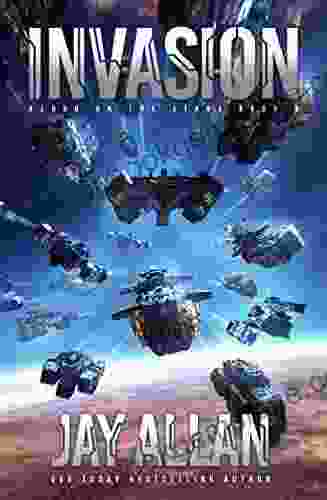
 Franklin BellThe Invasion Blood On The Stars: An Epic Saga of Humans Battling for Survival...
Franklin BellThe Invasion Blood On The Stars: An Epic Saga of Humans Battling for Survival... Alvin BellFollow ·19k
Alvin BellFollow ·19k George MartinFollow ·16.7k
George MartinFollow ·16.7k Edgar Allan PoeFollow ·15.3k
Edgar Allan PoeFollow ·15.3k Derek BellFollow ·11.6k
Derek BellFollow ·11.6k Julian PowellFollow ·5.5k
Julian PowellFollow ·5.5k Brett SimmonsFollow ·5.1k
Brett SimmonsFollow ·5.1k Clayton HayesFollow ·12.5k
Clayton HayesFollow ·12.5k Colton CarterFollow ·19.1k
Colton CarterFollow ·19.1k

 Braden Ward
Braden WardMade to Order Robots and the Coming Revolution
Robots are becoming increasingly common...
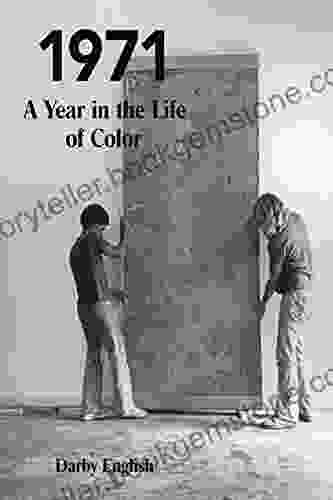
 Clay Powell
Clay Powell1971: A Year in the Life of Color
The year 1971 was a pivotal one for color....
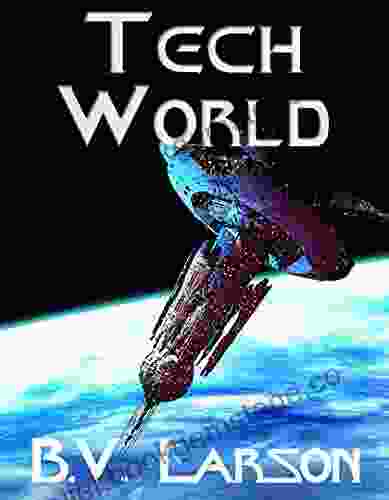
 Ralph Waldo Emerson
Ralph Waldo EmersonTech World's Undying Mercenaries: A Deep Dive into the...
In the ever-evolving landscape of the...

 Wade Cox
Wade CoxThe Ultimate Traveler's Guide to the People, Places, and...
Travel has always been a part of the human...
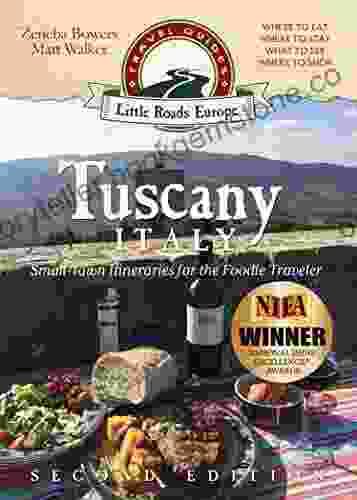
 Evan Simmons
Evan SimmonsA Comprehensive Guide: Uncovering Small Town Culinary...
: A Culinary Odyssey Beyond the City...
4.3 out of 5
| Language | : | English |
| File size | : | 3140 KB |
| Text-to-Speech | : | Enabled |
| Screen Reader | : | Supported |
| Enhanced typesetting | : | Enabled |
| Print length | : | 134 pages |


